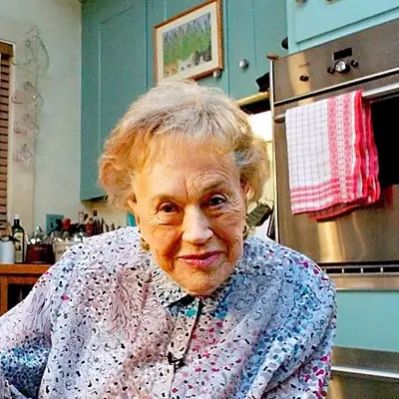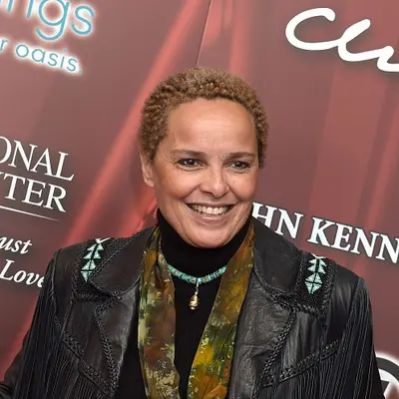What Is Julia Child’s Net Worth?
At the time of her passing in 2004, American chef, author, and television personality Julia Child had a net worth equivalent to $50 million when adjusted for inflation. This figure represents the culmination of a multifaceted career spanning cookbook authorship and television stardom. Julia Child’s financial standing was primarily derived from her successful cookbooks and popular television shows, making her a household name in American cuisine. Her initial breakthrough was in 1961 with “Mastering the Art of French Cooking,” which profoundly influenced culinary practices in American homes. Subsequently, she authored 16 additional cookbooks, which further secured her financial success and reputation.
Culinary Career and Financial Success
Julia Child’s career took off with the publication of “Mastering the Art of French Cooking” in 1961, which was co-authored with Simone Beck and Louisette Bertholle. This cookbook was groundbreaking for its time, presenting French cuisine in a way that was accessible to American home cooks. Before this pivotal publication, Child taught cooking classes for American women starting in 1951 alongside Beck and Bertholle, generating initial income and establishing a foundation for her later success. “Mastering the Art of French Cooking, Volume Two” followed in 1970, further solidifying her literary and financial achievements. Royalties from these cookbooks contributed significantly to her net worth.
Following the success of her initial cookbook, Julia Child expanded her influence through magazine articles and a column for “The Boston Globe,” broadening her revenue streams and bolstering her reputation. In 1968, “The French Chef Cookbook” was released, capitalizing on her television popularity and offering viewers a tangible connection to her on-screen persona. Subsequent publications such as “Julia Child & Company” (1978), “Baking with Julia” (1996), and “Julia’s Menus For Special Occasions” (1998) continued to generate income through book sales and royalties. Furthermore, “Julia’s Breakfasts, Lunches & Suppers” (1999) and “Julia and Jacques Cooking at Home” (1999) added to her financial achievements, demonstrating her sustained relevance in the culinary world.
Julia Child’s foray into television significantly boosted her financial standing. Her show “The French Chef,” which premiered in February 1963 on Boston’s WGBH, ran for 10 seasons and aired 201 episodes. This show not only gained her critical acclaim but also provided a steady income through her contract with WGBH. In 1966, she won a Primetime Emmy for Achievements in Educational Television – Individuals, increasing her market value and public demand. Subsequent TV shows, including “Julia Child & Company” (1978–1979), “Julia Child & More Company” (1979–1980), and “Dinner at Julia’s” (1983–1984), added to her earnings and cemented her status as a television personality. Later in her career, shows such as “Cooking with Master Chefs: Hosted by Julia Child” (1993–1994), “In Julia’s Kitchen with Master Chefs” (1995–1996), “Baking with Julia” (1996–1998), and “Julia & Jacques Cooking at Home” (1999–2000) continued to be financially beneficial, as she earned income from each show through various contracts and syndication rights. In 1996 and 2001, she won Daytime Emmys for Outstanding Service Show Host, which further amplified her appeal and earning potential.
Early Career and Foundations of Net Worth
Julia Child’s early career choices laid the groundwork for her later financial achievements. After graduating from Smith College in 1934 with a history degree, she initially worked as a copywriter in W. & J. Sloane’s advertising department in New York City. While this role did not directly contribute to her later culinary success, it provided valuable experience in communication and marketing, skills she would later use to promote her cookbooks and television shows. In 1942, during World War II, Child joined the Office of Strategic Services (OSS), the precursor to the CIA. During her time at OSS, she initially worked as a typist but was later promoted to a top-secret researcher under General William J. Donovan. Her work in the OSS Emergency Sea Rescue Equipment Section, where she helped develop shark repellent, showcased her problem-solving abilities and resourcefulness. For her service, she received the Emblem of Meritorious Civilian Service. While her specific earnings during this period are not publicly available, her wartime service demonstrates her dedication and competence, qualities that contributed to her future success. It was not until her thirties, after meeting her husband Paul, that Julia Child started to learn cooking.
Personal Life and Impact on Net Worth
Julia Child’s personal life and marriage to Paul Cushing Child significantly influenced her career and, subsequently, her net worth. Julia and Paul married on September 1, 1946, in Lumberville, Pennsylvania, after meeting in Kandy, Ceylon, where Paul was stationed with the Office of Strategic Services. After their marriage, the couple relocated to Washington, D.C., and then to Paris when Paul was assigned to the United States Foreign Service as an exhibits officer. It was in Paris that Julia attended Le Cordon Bleu, graduating in 1951, and began her formal culinary education. Her training at Le Cordon Bleu, combined with her experiences in France, shaped her expertise in French cuisine, which became the foundation of her culinary career. Paul’s support and sophisticated palate were critical in shaping her culinary perspective. In 1961, Paul retired, and the couple moved to Cambridge, Massachusetts, which became their base for launching Julia’s cooking empire. Paul’s support was invaluable to Julia’s career; he helped her edit manuscripts and provided crucial feedback on her recipes. Paul’s death in 1994 led Julia to establish The Julia Child Foundation for Gastronomy and Culinary Arts in 1995. After her death, the foundation began making grants to nonprofit organizations and giving out the Julia Child Award. While the financial details of the foundation are not fully public, it has played a role in sustaining her legacy and impact on the culinary world.
Legacy and Awards
Julia Child’s legacy is marked by numerous awards and accolades that underscore her significant impact on American culinary culture. In 1965, “The French Chef” received a Peabody Award, recognizing its innovative approach to culinary television. In 1980, she won a U.S. National Book Award for “Julia Child and More Company,” acknowledging her literary contributions to the culinary arts. In 2000, she was honored with the Knight of France’s Legion of Honor award, affirming her international influence. Additionally, she was elected as a Fellow of the American Academy of Arts and Sciences. In 2003, Julia received the U.S. Presidential Medal of Freedom, recognizing her cultural and educational contributions. Posthumously, in 2007, she was inducted into the National Women’s Hall of Fame. Her financial legacy extends beyond her immediate earnings. In 2001, Julia agreed to donate her kitchen in Cambridge, Massachusetts, to the Smithsonian Institution’s National Museum of American History in Washington, D.C. While not directly contributing to her net worth, this donation recognized her cultural importance and enduring influence. In 2014, the U.S. Postal Service released a set of “Celebrity Chefs Forever” stamps featuring Julia Child. Her legacy continues to inspire and influence culinary professionals and home cooks, reflecting a career that has had a lasting impact on food culture.
Real Estate and Other Assets
Julia Child owned a house in Cambridge, Massachusetts, which served as her primary residence for many years. The house, located at 103 Irving Street, became an iconic symbol of her culinary legacy. While specific details of the property’s value are not publicly available, similar properties in the Cambridge area can fetch substantial amounts on the real estate market. This house was not just a residence but also a workspace where three of her television shows were filmed, and it housed her famous kitchen, which she later donated to the Smithsonian Institution. Besides her home in Cambridge, there is no publicly available information about other significant real estate holdings or assets that contributed to her net worth. Given her focus on her culinary career and television appearances, it is likely that the majority of her wealth was tied to her intellectual property, book sales, and television contracts rather than extensive real estate investments.
 Net Worth Ranker
Net Worth Ranker



























































